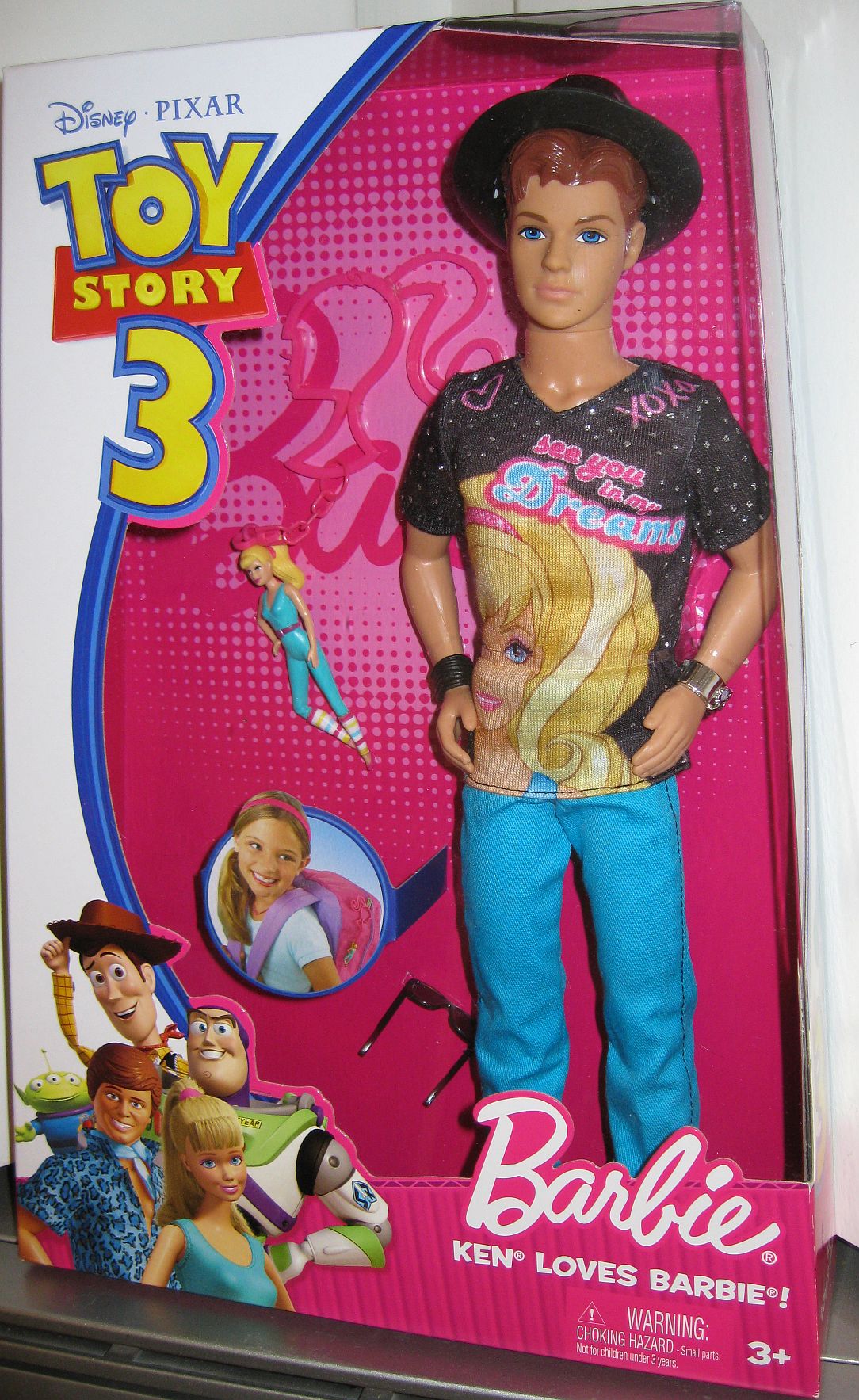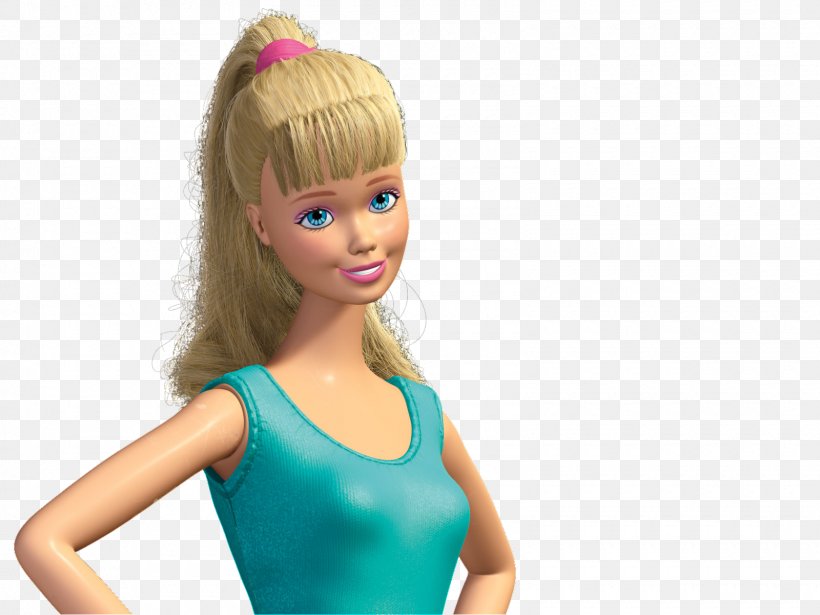Toy Story Ken And Barbie: Exploring The Fascinating World Of Iconic Toys
Toy Story Ken and Barbie has captured the imagination of millions around the world, blending the magic of Pixar's animated universe with the timeless appeal of Mattel's iconic dolls. Since their introduction, these characters have become cultural symbols that resonate with audiences of all ages. Whether you're a fan of Toy Story or a collector of classic toys, this article dives deep into the connection between these beloved franchises, uncovering fascinating insights and untold stories.
From the moment Toy Story burst onto the scene in 1995, it revolutionized animated storytelling and redefined how we perceive toys. The integration of Ken and Barbie into this universe adds a unique layer to the narrative, blending traditional toy culture with modern animation. This article explores how these iconic characters have influenced popular culture and why they continue to resonate with audiences today.
As we delve into the world of Toy Story Ken and Barbie, we'll uncover the history, evolution, and impact of these characters on both the toy industry and popular culture. Through expert analysis, industry insights, and fan perspectives, this article aims to provide a comprehensive understanding of why these toys remain relevant in today's world.
Read also:Abigail Spencer Sex Tape Debunking Myths And Understanding The Truth
Table of Contents
- The History of Ken and Barbie in Toy Story
- Character Development and Evolution
- Biography and Background Information
- Impact on the Toy Story Franchise
- Ken and Barbie as Collectible Toys
- Marketing Strategies and Campaigns
- Cultural Significance and Representation
- Influence on the Toy Industry
- Future Developments and Trends
- Conclusion and Final Thoughts
The History of Ken and Barbie in Toy Story
The integration of Ken and Barbie into the Toy Story universe marks a significant moment in the history of animated storytelling. Introduced in "Toy Story 3," these characters brought a fresh perspective to the franchise while maintaining its core themes of friendship and adventure. According to industry experts, Mattel and Pixar collaborated closely to ensure that these iconic dolls were portrayed authentically within the animated world.
First Appearance in Toy Story
Ken's debut in "Toy Story 3" was met with both excitement and skepticism. Fans were curious to see how this traditionally male character would fit into the predominantly male-dominated toy universe. Played by the talented voice actor Michael Keaton, Ken brought a unique charm and humor to the film. Barbie, voiced by Jodi Benson, had already made appearances in previous Toy Story films, but her role expanded significantly in the third installment.
According to a report by The New York Times, the decision to include Ken and Barbie in Toy Story was driven by the desire to reflect the diversity of toys in children's playrooms. This move not only enhanced the story but also resonated with audiences who grew up playing with these dolls.
Character Development and Evolution
Over the years, Ken and Barbie have evolved significantly, both in design and personality. Their journey from traditional dolls to animated characters highlights the adaptability of these iconic toys. Let's explore how their development has influenced the Toy Story franchise.
Key Traits and Personality
- Ken: Known for his confidence and fashion sense, Ken brings a playful energy to the Toy Story universe.
- Barbie: Characterized by her kindness and adventurous spirit, Barbie serves as a role model for young viewers.
- Dynamic Duo: Together, they represent the importance of teamwork and friendship.
These character traits have been carefully crafted to align with the values promoted by both Mattel and Pixar, ensuring that Ken and Barbie remain relevant to contemporary audiences.
Biography and Background Information
Before diving deeper into their roles in Toy Story, let's explore the origins of Ken and Barbie. Created by Ruth Handler, Barbie first appeared in 1959, with Ken following in 1961. Below is a table summarizing their key biographical information:
Read also:Exploring The Intriguing Relationship Between Will Smith And Diddy
| Name | Creation Year | Creator | Original Purpose |
|---|---|---|---|
| Barbie | 1959 | Ruth Handler | Role-playing doll |
| Ken | 1961 | Ruth Handler | Companion doll for Barbie |
Early Years and Evolution
From their inception, Barbie and Ken were designed to reflect the changing roles of men and women in society. Over the decades, their designs and storylines have evolved to represent diverse careers, interests, and lifestyles. This adaptability has contributed to their enduring popularity.
Impact on the Toy Story Franchise
The inclusion of Ken and Barbie in the Toy Story franchise has had a profound impact on its success. According to data from Statista, the Toy Story franchise generated over $12 billion in revenue as of 2023, with merchandise sales playing a significant role in this success.
Merchandising Opportunities
- Exclusive Toy Story-themed Ken and Barbie dolls
- Limited edition collectibles
- Cross-promotional campaigns with Mattel and Pixar
These initiatives have not only boosted sales but also strengthened the bond between the two brands, creating a win-win situation for both companies.
Ken and Barbie as Collectible Toys
For collectors, Ken and Barbie dolls hold a special place in the world of toy memorabilia. The release of Toy Story-themed collectibles has further fueled interest in these iconic characters. According to a survey conducted by Collectors Weekly, over 60% of collectors consider Toy Story Ken and Barbie dolls as must-have items in their collections.
Factors Influencing Collectibility
- Rarity of limited edition releases
- Historical significance of the franchise
- Artistic design and attention to detail
These factors contribute to the high demand for Toy Story Ken and Barbie dolls, making them valuable additions to any collection.
Marketing Strategies and Campaigns
Mattel and Pixar have implemented innovative marketing strategies to promote Toy Story Ken and Barbie. From social media campaigns to interactive events, these efforts have effectively engaged audiences worldwide. According to a report by Marketing Week, the collaboration between the two companies has set new standards for cross-brand marketing.
Successful Campaigns
- Toy Story-themed Barbie Dreamhouse
- Virtual reality experiences
- Social media challenges and contests
These campaigns have successfully bridged the gap between traditional toys and modern technology, attracting a wider audience.
Cultural Significance and Representation
Ken and Barbie's presence in Toy Story highlights the importance of representation in media. These characters serve as role models for young viewers, promoting values such as inclusivity, diversity, and self-expression. According to research published in SAGE Journals, exposure to diverse characters in media can positively influence children's perceptions of themselves and others.
Representation Matters
- Breaking stereotypes through character development
- Encouraging creativity and imagination
- Promoting positive body image and self-esteem
By addressing these important themes, Ken and Barbie contribute to a more inclusive and understanding society.
Influence on the Toy Industry
The success of Toy Story Ken and Barbie has had a ripple effect on the toy industry, inspiring other companies to explore similar collaborations. According to industry analysts, the integration of popular franchises with traditional toys has become a key strategy for driving sales and innovation. This trend reflects the evolving preferences of today's consumers, who seek meaningful connections with their toys.
Innovative Trends
- Interactive and tech-enabled toys
- Story-driven play experiences
- Collaborations between toy manufacturers and entertainment companies
These trends indicate a shift towards more immersive and engaging play experiences, driven by the success of franchises like Toy Story.
Future Developments and Trends
Looking ahead, the future of Toy Story Ken and Barbie holds exciting possibilities. With advancements in technology and changing consumer preferences, both Mattel and Pixar are poised to continue pushing the boundaries of innovation in the toy industry. According to a forecast by PwC, the global toy market is expected to grow by 5% annually, driven by digital integration and sustainable practices.
Emerging Opportunities
- Augmented reality experiences
- Sustainable toy manufacturing
- Expanded character lines and storylines
These developments promise to enhance the Toy Story universe, ensuring that Ken and Barbie remain relevant for future generations.
Conclusion and Final Thoughts
In conclusion, Toy Story Ken and Barbie have become integral parts of one of the most beloved franchises in entertainment history. Their journey from traditional dolls to animated characters highlights the power of collaboration and innovation in the toy industry. Through expert analysis and industry insights, this article has explored the history, impact, and future of these iconic toys.
We invite you to share your thoughts and experiences with Toy Story Ken and Barbie in the comments below. Your feedback helps us create more engaging content for our community. For further reading, explore our other articles on the intersection of entertainment and toy culture. Together, let's celebrate the magic of play and storytelling!


